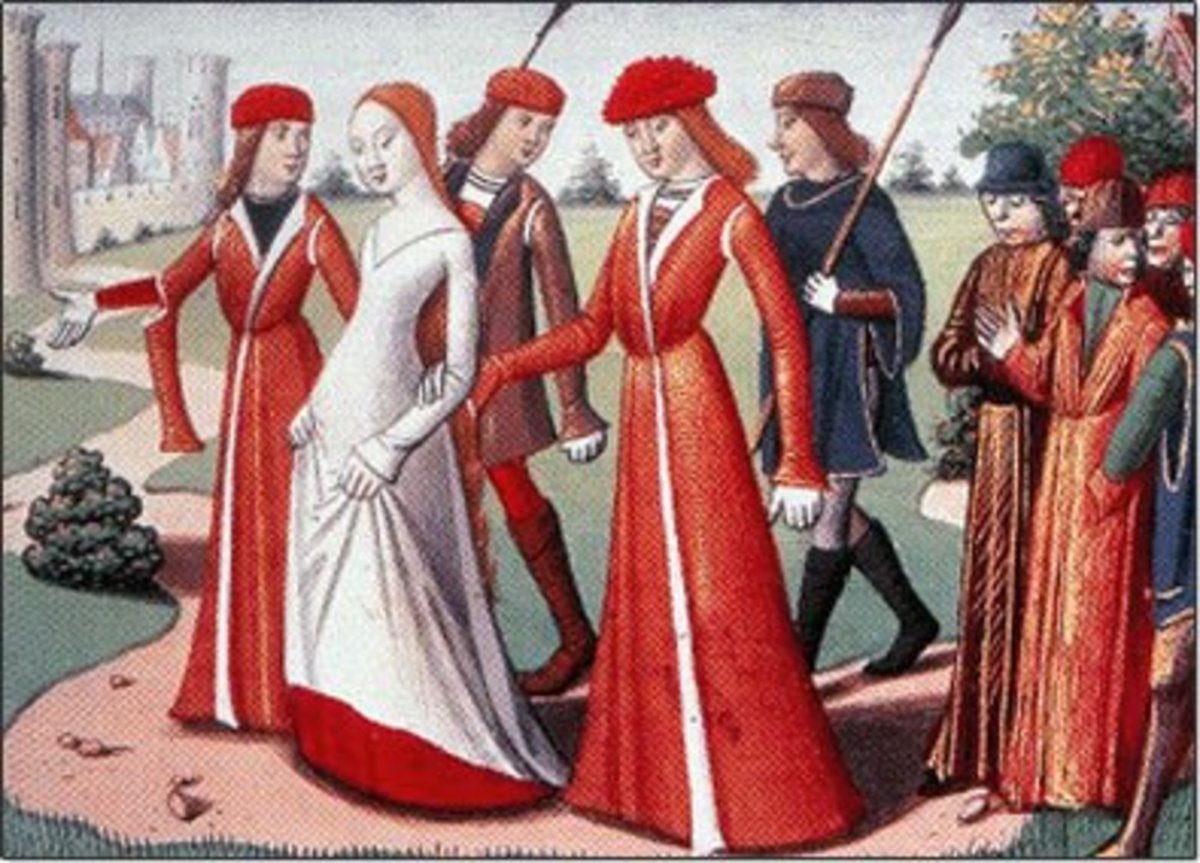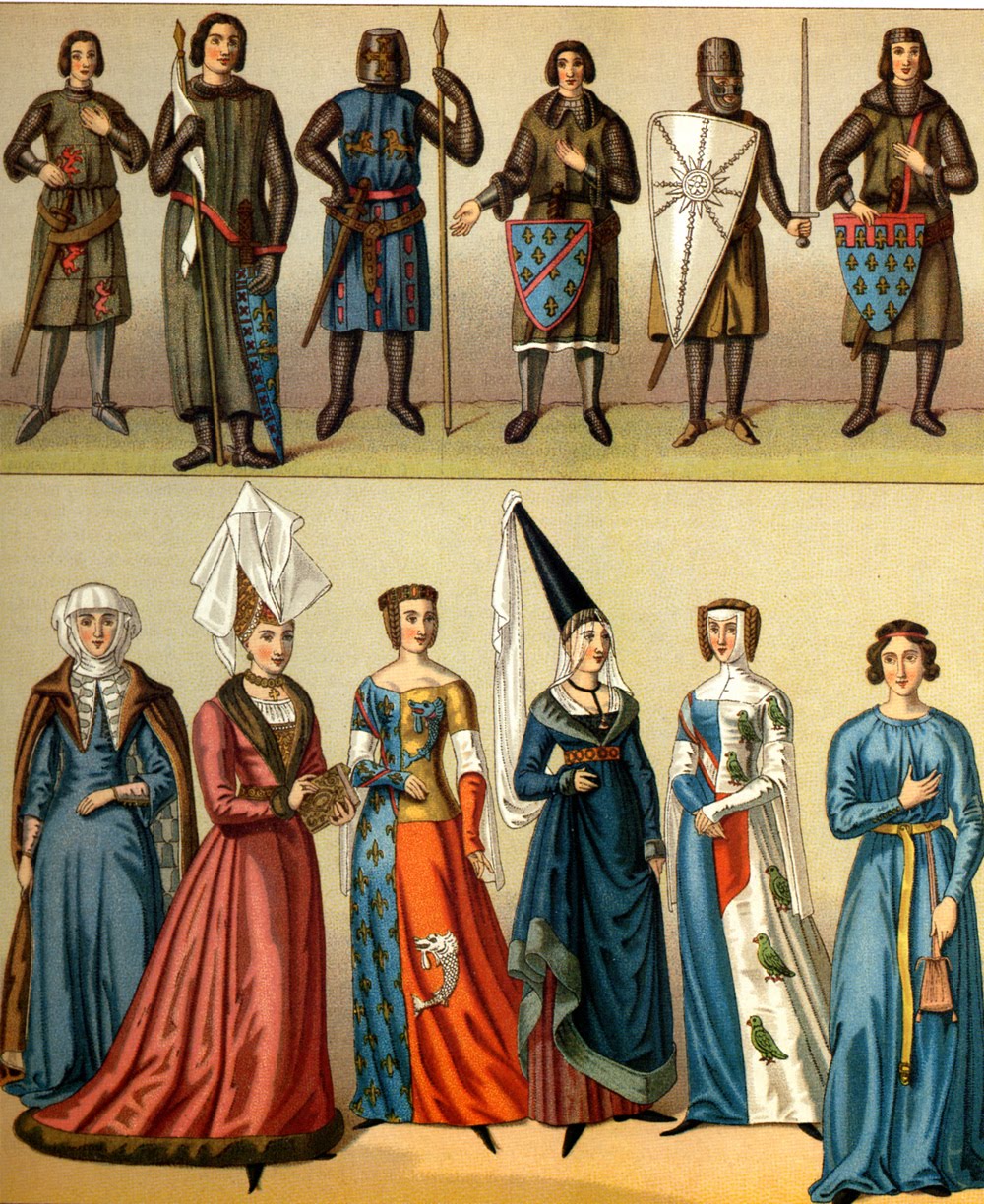
How Did People Make Fabric in the middle ages and How Did They Color It. Middle ages clothing
Women's costumes, dresses, skirts, aprons, bodices;. Middle Ages Clothing is Our Vocation. At the very first time, we faced with the beauty of traditional medieval clothes in childhood, staring at the amazing princesses' dresses in the picture books. Then we plunged into the maelstrom of LARPing, creating the costumes out of materials on.

Medieval dress/Fantasy costume/Middle age fairy dress by ElaVintageHandmade on Etsy https//www
For Rich and For Poor. Although they lived centuries before the Middle Ages, biblical figures were often represented in contemporary medieval dress to fit into the fashion of the time, such as in this scene of Christ's crucifixion. The Piercing of Christ's Side, Simon Bening, about 1525-1530, From the collection of: The J. Paul Getty Museum.

DeviantArt More Artists Like 1872 Trouville in spring by AprilMo Medieval clothing, Medieval
Information on medieval clothing for costumers. Peasant Clothing. Peasant men wore stockings or tunics, while women wore long gowns with sleeveless tunics and wimples to cover their hair. Sheepskin cloaks and woolen hats and mittens were worn in winter for protection from the cold and rain. Leather boots were covered with wooden patens to keep.

Modehistoria från hög och senmedeltiden medeltida kläder Teal Sound
Pearson's Renaissance Shoppe is your source for beautiful Medieval Dresses and Renaissance Dresses. Spanning the Dark Ages to the times of Pirates ruling the seven seas, our Renaissance costumes for women are authentic and comfortable. But we shouldn't get caught up with just medieval knight armor or pirate wench costumes - even.

Medieval peasant woman. Double click on image to ENLARGE. Medieval peasant, Medieval peasant
Women's Clothing in the Middle Ages. In the fascinating world of the Middle Ages, medieval fashion played a significant role in defining the social status and identity of women. The clothing of medieval women was influenced by various factors, including their social status, occupation, and the prevailing fashion trends of the time.. Introduction to Medieval Fashion

Middle Ages fashion history in Germany. in 2020 Middle age fashion, Fashion history, Medieval
Wealthy women and noblewomen wore tunics, or sleeveless dresses that came to the floor, just as peasant women did, but the material choice was very different. The wealthy preferred more colorful, luxe fabrics and rich embroidery. Fur was usually worn on the inside of clothes to keep women warm, but as the era wore on, fur trim became more popular.

Pin auf MODA MEDIEVAL
Women's clothing during the Middle Ages featured a variety of patterns and embellishments that added visual interest to their attire. Embroidery was a popular technique used to decorate garments, with intricate designs often depicting scenes from religious texts or nature. Additionally, fabrics were adorned with woven patterns such as stripes.

Pin on Medieval Fashions
Dress - Medieval, Europe, Fashion: The dress of Europeans during the years from the collapse of the western part of the Roman Empire in the 5th century ce to about 1340 was slow to change and was largely standardized over a wide area. Clothes for men and women were similar, being sewn albeit crudely and loosely cut. A shirt or chemise and braies—that is, a roughly fitting kind of drawers.

Noble woman cca 1300. Cotte, surcot, ermine cape, silk veil, ramshornes, silk brocade REPORT
In the early Middle Ages, clothing was typically simple and, particularly in the case of lower-class peoples, served only basic utilitarian functions such as modesty and protection from the elements.. The normal women's costume of this era was a long peplos-like garment, pulled up to the armpit and worn over a sleeved undergarment (usually.

Renaissance style short cloak with hood. Shipping worldwide! Renaissance fashion, Medieval
The typical women's clothing for the fifth and sixth centuries was a body-length garment pulled up to the armpit and worn over a sleeved under-garment, usually another dress, by fastening brooches at the shoulders.. A kirtle is a type of garment that was commonly worn by women in the Middle Ages. It typically consisted of a bodice and a.

Middle Age Dresses The Dress Shop
Women's clothing in the Early Middle Ages was greatly influenced by the Byzantine style but it was eventually replaced by the Roman style. Women's clothes were ornamented with colorful borders or tablet-woven bands and fibulas (brooches), while both men and women could wear a superb jewelry. The main clothing materials were cotton and linen.

Beautiful Isabella of France, queen of England on Middle Ages.. Middle ages dress, Middle ages
Silk. Luxurious and costly, silk was used only by the wealthiest of classes and the Church. Hemp. Less costly than flax, hemp and nettles were used to create workaday fabrics in the Middle Ages. Though more common for such uses as sails and rope, hemp may also have been used for aprons and undergarments. Cotton.

The Medieval Clotheshorse Roger Wieck on the Fashion Revolution of the Middle Ages Getty Iris
Women's Clothing Layers. For women in medieval times, clothing layers were also an important aspect of their attire. Similar to men, women would start with a linen or cotton chemise as their base layer.. During the Middle Ages, women would commonly dress in multiple layers of garments, such as hose, a chemise as an underdress, and a tunic.

Pin by Emily Aqualime on Lajv stuff Medieval dress pattern, Middle ages clothing, Viking dress
In the Middle Ages, clothing was integral to identifying one's place in the world. Medieval people were highly skilled at reading the meaning of fashion, which is reflected throughout the painted pages of illuminated manuscripts. In Philosophy Presenting the Seven Liberal Arts to Boethius, female personifications of philosophy and the seven.

Queens Regent Isabeau of Bavaria History of Royal Women Middle ages clothing, Middle age
A look inside Eleanor de Montfort's wardrobe, and why it was important for a 13th-century countess to dress extravagantly and beautifully. People in the Middle Ages liked to layer up. Including underwear and outerwear, an everyday outfit regularly consisted of at least six different garments. There were three main pieces: a tunic, surcoat.

Historical Fiction Resources Fashion in the Early Middle Ages
Article. As in just about any other period of history, clothing in the Middle Ages was worn for necessity, comfort, and display. Bright colours and rich decorations made for a striking medieval wardrobe, at least among the wealthy, although there was a surprising similarity in clothes for different social classes and the sexes.